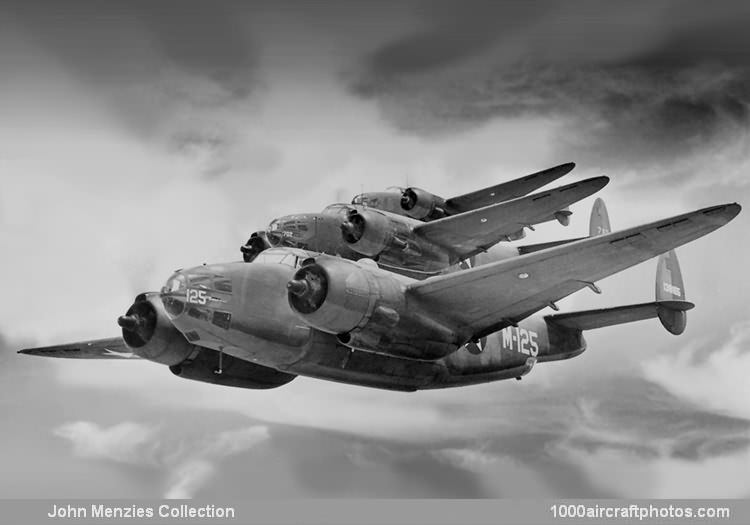11/15/2014. Remarks by Johan Visschedijk: "On August 13, 1941, Lockheed was awarded a US Defense Agency contract for 200 B-34-VE light bombers, to be built by Vega Aircraft, Lockheed's subsidiary, hence the 'VE' in the designation. Intended for delivery to Britain under Lend-Lease, they were assigned the USAAF serials 41-38020 to 41-38219 for contractual purposes. The aircraft were to be delivered to the RAF designated Ventura Mk.IIA and allotted the British s/n FD568 to FD767. The aircraft were powered by 2,000 hp Pratt & Whitney R-2800-31 radial engines. Armament consisted of two fixed forward-firing 0.50 in (12.7 mm) guns in the nose, two 0.50 in (12.7 mm) guns in a Martin dorsal turret, twin flexible 0.30 in (7.62 mm) guns in the nose and ventral positions, two flexible 0.30 in (7.62 mm) beam guns, and 3,000 lb (1,361 kg) of bombs could be carried internally.
Following US entry into WW II in December 1941, the aircraft were impressed into USAAF service, designated B-34-VE Lexington. (Reportedly only 25 Ventura IIAs reached the RAF.) From the original contract, 57 were completed as B-34A-2-VE bomber trainers, 28 as B-34A-3-VE gunnery trainers, and sixteen as B-34A-4-VE target tugs, while thirteen were completed as B-34B-1-VE navigation trainers. By October 1942 the aircraft in USAAF service were restricted from combat use and primarily used for training and costal patrol duties, hence they received the 'R' prefix in their designations.
A number of the first produced Ventura IIAs were retained in Canada for the RCAF, primarily used for training, being assigned to No. 340 Operational Training Unit at Pennfield Ridge, New Brunswick, and to No. 1 Central Flying School at Trenton, Ontario. As it turned out, only most of the remainder were either seized by the USAAF or retained in Canada. Eventually the RCAF operated 45 aircraft, new or from USAAF stock.
From May 18, 1943 on, twenty RB-34As from USAAF stock were transferred to Australia, and allotted the s/n A59-1 to A-59-20, these were operated by the RAAF units No. 13 Squadron, No. 1 OTU (Operational Training Unit), the Test Pilots Training Flight and the 2AD (Aircraft Depot). New Zealand received 23 USAAF stock RB-34As, which were taken on charge between June 8 and December 7, 1943. These went to the RNZAF with s/n NZ4583 to NZ4605, and were used for operational training, mostly with No. 1 (Bomber) Operational Training Unit at RNZAF Station Ohakea, while NZ4596 was converted to an instructional airframe (coded INST81) and was used at the Electrical and Wireless School at Wigram.
The photo shows three RB-34A-VEs of the Central Instructors School Bomber Training Group of the USAAF, operating from Randolph Field, Texas, USA. The leading aircraft, coded M-125, was later transferred to the RCAF and with the British s/n FD713 it was operated by the No. 340 Operational Training Unit at Pennfield Ridge. On February 20, 1945, it had a Category "C" mishap, while executing night circuits and landings, the aircraft swung after landing. The pilot failed to correct and the aircraft struck a snow bank at the edge of the runway. None of the five crew were injured."
